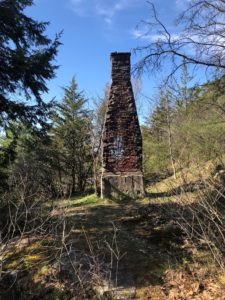
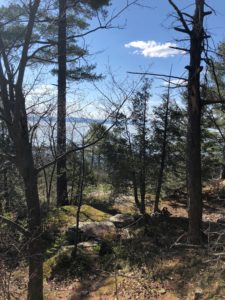

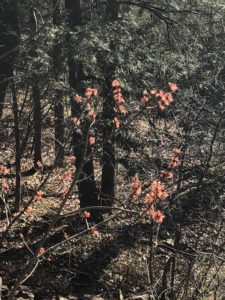
(Above-from left to right):
- A chimney from an old 1900s employee’s living quarters to Oakledge Farm
- A showing view of the still bare trees and green coming in
- Leafless oaks not yet blocking the view of the lake
- just a budding Red Maple
Phenological Changes:
The last time my plot was covered in a late spring snow and upon my return I find a 72 degree day with sunshine and greenery. Trees are budding and everything just looks sharper in the afternoon sun. The Eastern Whites and Cedar still make up most of the green in the overstory, and the moss and blooming buckthorne provide the green in the understory. A red catches my eye and to my left is a red maple blooming, the leaves look more like flowers than leaves. Now my senses change and I hear the rusting of animals and chirping of birds, 2 blue-chested warblers fly over head. The scene is completely changed and certainly not as foreboding as winter and even the shagbark hickory and oak trees look more relaxed in the spring breeze.
After the final melt of the snow, the understory came to life with green erupting from the dead leaves. Soon there were ferns and moss all around and it seems to cover everything. All the fallen trees and rocks have some sort of moss or lichen and this accounts for much of the ground cover green. Chipmunks and Grey squirrels can be heard and seen searching the ground for nuts and seeds. A chipmunk stops to sniff the air next to the buckthorne, its as if he is alerted to my presence up on the rocks above, a second later he scampers off into the leaves. Nearby I catch sight of a chickadee in on a log, he hops down and starts searching for seeds. Compared to my phenology site back home it is less green here in Vermont, in Virginia it is late spring and every tree shows its lovely fauna and leaves.
Over the year that I have been keeping track of the changing of the seasons here at oakledge park has exposed my to how this natural area interacts with culture. Specifically in my plot several chimneys are still left standing from the living quarters of people who used to live on the farm. What leads me to deducts this is the chimney are spread apart enough not to be a part of a larger kitchen, but they look appropriate for house chimneys. Coming forward in time a ways oakledge is now a thriving and robust park. A hub for recreation ranging from tennis courts to mountain bike trails. A place to bring your family and friends for a cookout and unwind and lay in a hammock. I would consider myself apart of that culture of relaxation. This area has existed to serve the community from its humble beginnings as a farm growing food to a park known for its engaging recreation. I to have benefited from its service as as part of its landscape. Up on my ledge I can see a landscape change and its as if I’m invisible. The rock gives me a great over look but also the ground below remains untouched by my foot. I am listening and for once I can hear what is happening around me. It definitely felt strange and foreign when I first came here, I was a disturbance, but when I found my silence I could feel the area accept my periodic intrusions. I remember a visit where I remained still for minutes at a time and in this span of silence I felt apart of the landscape, a casual observer. Oakledge is a rich place of history and recreation and I am glad I could be apart of that timeline.

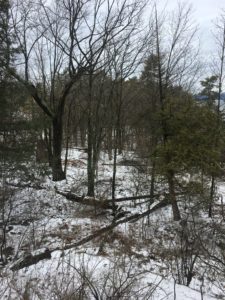 (snow covered ground)
(snow covered ground)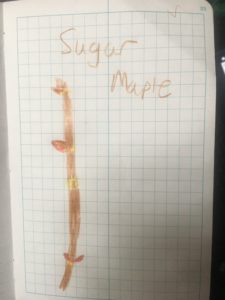
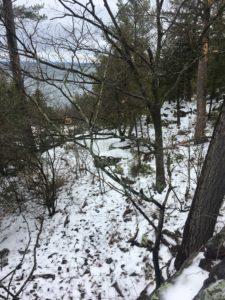 (snow covered- no showing of wildflowers)
(snow covered- no showing of wildflowers)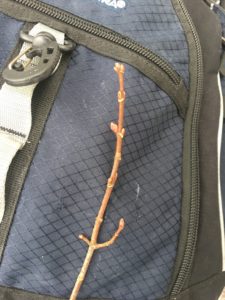
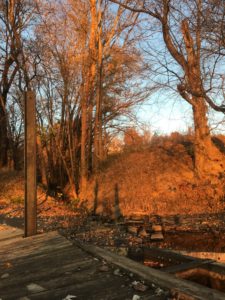
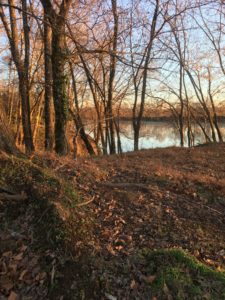


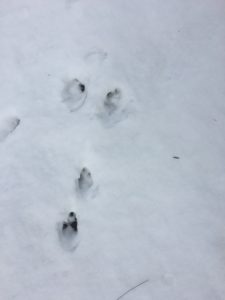
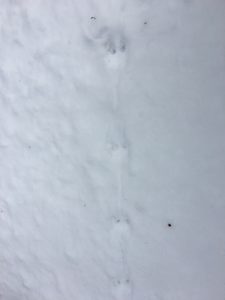

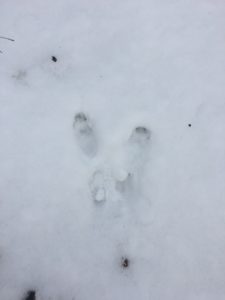
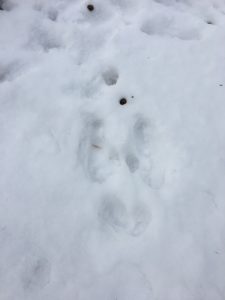

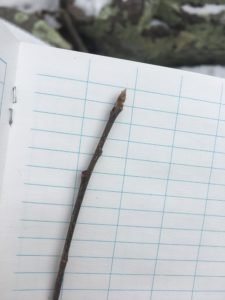

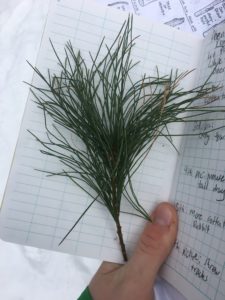
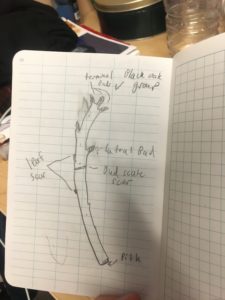 Black Maple Group twig
Black Maple Group twig
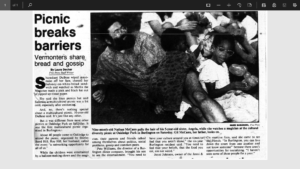
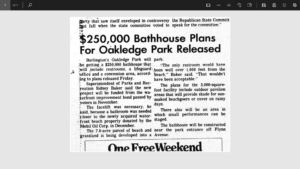
 Human History:
Human History: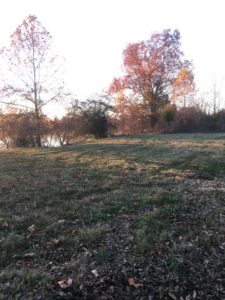
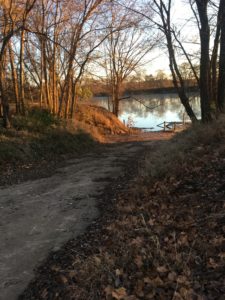
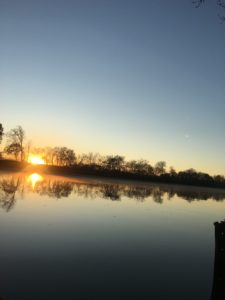
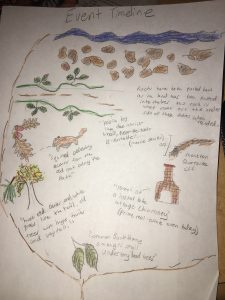
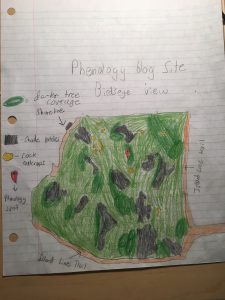
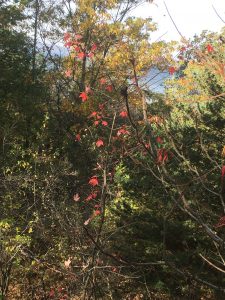
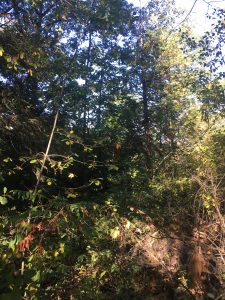


Recent Comments